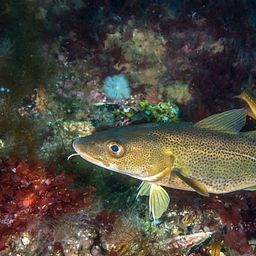Evaluating submerged and surface feeding strategies in farmed Atlantic Cod: Energetic and production perspectives
Aquacultural Engineering ()
Open access (hybrid)
3 Akvaplan-niva (current employee)
Authors (7)
- Peygham Ghaffari
- Thor Magne Jonassen
- Johannes Kvam
- Fredrik Staven
- Trond M. Kortner
- Guro Løkka
- Julianne Jacobsen
Abstract
This study investigated the influence of submerged versus surface feeding strategies on behavior and growth performance in farmed Atlantic Cod (Gadus morhua) in a full-scale, surface-based open cage system in northern Norway. Cod receiving submerged feed consistently occupied deeper and more stable vertical positions than surface-fed fish, particularly under elevated surface temperatures ( ). While both groups exhibited diurnal vertical migrations, submerged-fed Cod displayed tighter vertical cohesion and reduced surface avoidance. The SGR was slightly higher in the submerged-fed group ( vs. ), likely reflecting reduced thermal stress and better alignment with the species’ natural foraging depth. However, FCR was marginally poorer (1.23 vs. 1.20), possibly due to increased feeding competition caused by localized feed delivery. In contrast, surface feeding provided more uniform feed dispersion, resulting in lower competition and more efficient feed utilization. Mortality rates were comparable between treatments (24.2% submerged vs. 23.4% surface), with peaks observed during a warm-water starvation phase. Principal component analysis identified feed availability as the primary driver of behavioral dynamics, followed by temperature and biomass. Submerged feeding also promoted greater behavioral synchrony and depth targeting under thermally stratified conditions. These findings highlight a trade-off between growth potential and feed efficiency, shaped by the spatial and competitive dynamics of feeding depth. They underline the importance of species- and site-specific feeding strategies, particularly in environments subject to thermal stress. The results can inform the optimization of feeding depth, scheduling, net pen configuration, and feeder design and placement. Furthermore, they support the development of behavior-informed, adaptive management tools aimed at improving production efficiency and fish welfare in Cod aquaculture.
